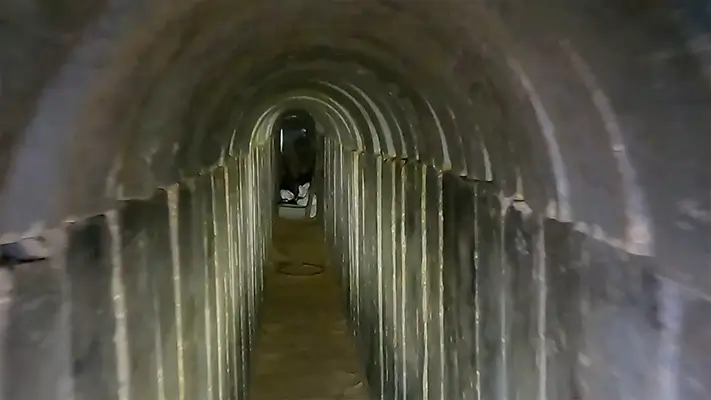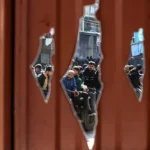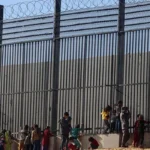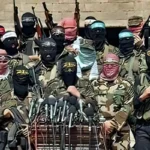Mystery of the tunnel: The link between Hamas and Gaza hospitals
One of the mysteries of today’s war in the Middle East is the network of tunnels: accusations made by the Israel Defense Forces (IDF) and the US Pentagon against Hamas of placing military facilities, including command posts and weapons depots, under hospitals in the Gaza Strip reveal a whole world underground.
Their length can be compared to the subway system of a large metropolis. Where do these tunnels come from? With what money are they built? How long have they been built? And most importantly, why? They are built for war. They are built with the money of charitable organizations like UNRWA. Money that should have been used to build schools, hospitals, and power plants was spent on strategic facilities like tunnels.
Al-Shifa Hospital itself is 1,500 beds and 4,000 employees.
The tunnel under Al-Shifa Hospital
The Israel Defense Forces has provided video that shows that narrow passageways and a spiral staircase begin only a few meters from the Al-Shifa Hospital fence and lead to a 55-meter horizontal tunnel. This is confirmed by information from our sources, including Ronen Bergman, New York Times Journalist.
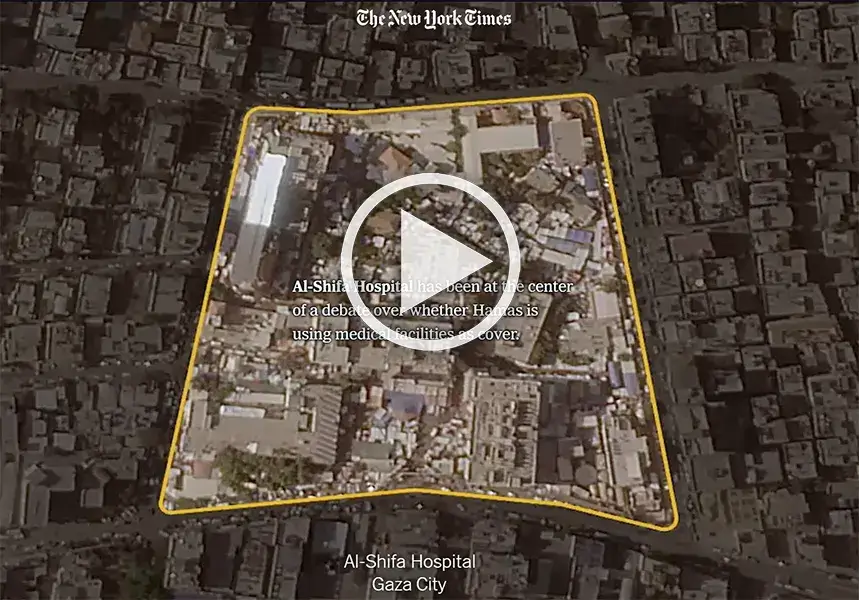
The details that have been found indicate that the secret passage was used not only as a hiding place and a place to move around, but also to store weapons. Moreover, weapons stockpiles and notebooks containing photographs and videos of the hostages were found in the underground shelter, which were located within the hospital grounds. It is important to emphasize that the tunnel led to a reinforced door, part of the measures to block Israeli forces’ access to Hamas command centers and underground facilities.
On November 19, 2023, according to WHO, a minimum of 31 children were evacuated from Al-Shifa Hospital to Egypt.
Military and political significance
It is becoming clear that the Hamas tunnels are not only a humanitarian crime, but also have a serious military and political impact on the theater of operations in the Gaza Strip. Hamas’ strategic use of the tunnel network changes the nature of the battle and presents a serious challenge to the Israeli military.
- Military strategy and tactics:
- The stealthiness of the tunnels allows Hamas to move military units effectively, misleading Israeli and Egyptian forces, giving the advantage of surprise attacks.
- The use of tunnels as weapons storage and command posts greatly complicates the tasks of counterterrorism operations, an important element of Hamas’s defensive strategy.
- The political aspect:
- The presence of tunnels under civilian facilities such as hospitals calls into question the effectiveness of international humanitarian law, sparking heated debate at the political level.
- The issue of misappropriation of international aid used by Hamas to finance the construction of the tunnels is becoming a hot topic of discussion in the world, including the UN and other international organizations.
- Combating the tunnel threat:
- Israel and Egypt have employed various technologies and tactics, including the tunnel barrier and engineering innovations, to prevent the construction and operation of Hamas tunnels, in what is becoming a constant arms and technology race in the region.
- Transparency and honesty in reporting the presence and destruction of the tunnels is a key element in the battle of opinions, with each side seeking to convince the world community of the rightness of its actions and compliance with international obligations.
Implications for medical infrastructure
One of the most disturbing pages of this investigation is the impact of underground warfare on Gaza’s medical infrastructure. The underground hidden network around and under hospitals, not only threatens the safety of patients and medical staff, but also exacerbates the humanitarian crisis.
- Lack of resources and fuel: fuel and medical supplies are being depleted due to the blockade caused by military action and tunnels under the hospital. WHO warns of critical shortages of life-saving supplies.
- Destruction of medical infrastructure: Fighting provoked by Hamas’ use of the tunnel under the hospital leads to the destruction of medical facilities, resulting in the loss of important healthcare institutions.
- Patient evacuation: We have witnessed tragic moments when evacuation of critically ill patients becomes a matter of life and death. In particular, WHO and other international organizations have called for the evacuation of newborns and the critically ill to ensure their safety in more stable facilities, a stark aid for our times.
Hamas’ activities not only significantly alter the balance in the region and the dynamics of the conflict, but also leave ordinary citizens helpless in this chaos. The tunnels have not just become a strategic element, they have also become a cornerstone in the region’s ever-worsening humanitarian situation.
Analysis and perspectives
- Long-term military implications: The tunnels built by Hamas are expected to continue to provide a fortified foundation for their military operations. As a consequence, the Israeli military will have to seek new approaches to underground gas tunnels to counter the threat, which may include developing advanced technologies to detect and neutralize underground structures.
- Humanitarian perspectives: Undoubtedly, in the long term, civilians will have to adapt to a changing environment where tunnels under hospitals are becoming part of everyday life. Ensuring access to safe shelters and medical care for all those in need will be essential.
- International response: The situation around the Hamas tunnels raises an urgent need for international cooperation and coordination to protect civilians and hold Hamas accountable for the use of humanitarian facilities for military purposes. Clearly, without joint efforts, a resolution to this situation seems unlikely.
- Reducing the intensity of hostility: Pauses in hostilities, as suggested by President Biden, could provide opportunities for truce talks, possible hostage exchanges and political prisoners.
- Israeli Military Strategy Revisited: It is likely that following the opening of the second tunnel under the UNRWA facility, the appropriateness of current techniques for combating hamas tunnel will be reevaluated by the Israeli military.
- The reality of resettlement: Already much of the population of Gaza has faced resettlement and further reallocation of resources may be necessary to alleviate their suffering.
The tunnels are a key arterial node in the course of this conflict, and their impact will be felt not only today but for the foreseeable future. The dilapidated walls of hospitals blown up by explosions from the fighting stand not only as a reminder of the horrors of war, but also as a call to action for peace and humanitarianism.
Use of hospitals as military facilities
The use of hospitals for military purposes by Hamas raises serious moral and ethical questions. This action places civilians in the face of an invisible threat as medical facilities meant to save lives are turned into terrorist safe havens and military installations.
- Hamas Command Centers: Some doctors and medical staff who are also Hamas members are allegedly embedded in hospitals, including Kamal Adwan and Al-Shifa, turning these places not only into treatment facilities but also into command and control centers and weapons depots.
- Terrorist Infrastructure: The Israeli Defense Forces raided areas near hospitals, resulting in the detention of some 80 terrorists and the destruction of infrastructure used by Hamas.
- Humanitarian crisis: Hundreds of patients and thousands of displaced people seeking refuge in hospitals have been affected by power cuts and lack of medical equipment due to the hostilities. This has led to deteriorating conditions for medical care and increased civilian casualties.
The use of the tunnel under the hospital as a military facility is a total inhumanity, in direct violation of international norms and the canons of war, which prescribe the security and untouchability of medical facilities during armed conflicts.
The story of the tunnel under Al-Shifa Hospital must be told so that the world will see the face of the humanitarian crisis that has emerged in Gaza.
The opening of the tunnel and its significance
On February 13th, social media exploded with a video published by the Israeli State Service showing Hamas leader Sinwar on the run, hiding with his family in tunnels in the Khan Younis area of the Gaza Strip.
The significance of this discovery is now becoming clear:
- Disguise and Fear: This tunnel has become a temporary refuge for those who, while trying to escape responsibility, nevertheless find themselves trapped in their own manipulation and deception.
- A double blow to security: at the same time as providing shelter for the military and their families, tunnels endanger the lives of civilians, making them unwitting accomplices and victims of hostilities.
- A difficult milestone in the bloodshed: Finding a military leader’s family underground and trying to protect them from retaliation epitomizes the complex emotional and physical costs for all parties to the conflict.
It should be reemphasized that the opening of Hamas tunnels under medical facilities reveals a new level of humanitarian crisis and the complexities of military conflict in the Middle East. Such actions not only violate international humanitarian law, but also jeopardize the lives and safety of civilians, deepening the ethical and moral dilemmas associated with the confrontation in the region.

